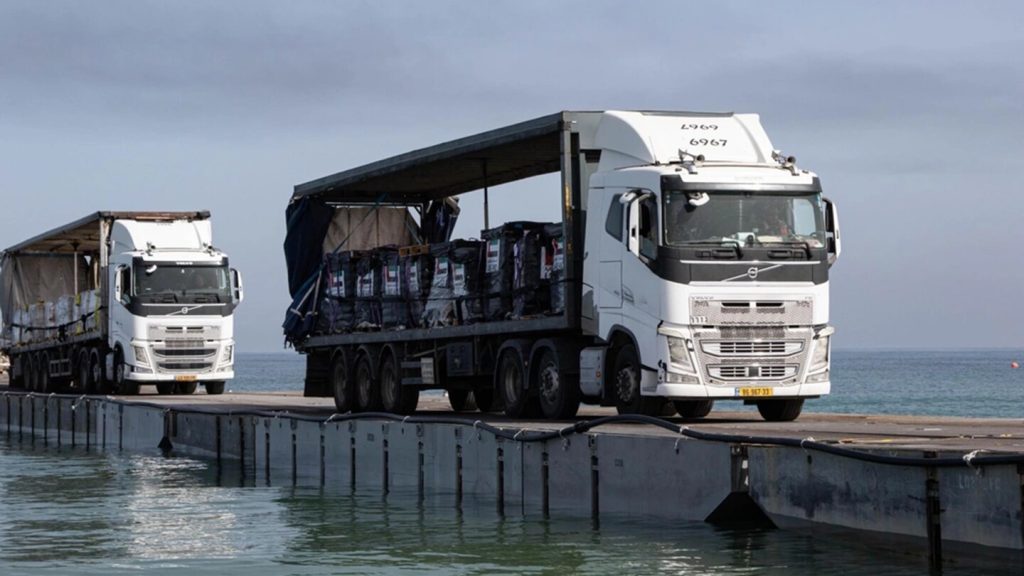Trucks carrying much-needed aid for the Gaza Strip have started rolling into the enclave for the first time through a newly built U.S. pier. The operation is anticipated to potentially scale up to 150 truckloads a day, aiming to provide food and other essential supplies to the besieged area. More than 300 pallets of aid were delivered in the initial shipment, with the U.N. preparing for distribution. Despite this progress, it is emphasized that the floating pier project is not a sufficient replacement for land deliveries that used to bring in over 500 truckloads a day before the conflict.
There are concerns about the operation’s sustainability due to the ongoing fighting, logistical challenges, and a fuel shortage for the aid trucks resulting from the Israeli blockade of Gaza. The Israeli offensive against Hamas has led to significant casualties, and aid agencies are struggling to meet the increasing humanitarian needs in the region. The U.S. military, in collaboration with the U.N. and aid groups, is managing the aid distribution process, ensuring that supplies are transported to warehouses for delivery to those in need. The initial aid shipment included shelter kits, tents, and hygiene kits, with more assistance planned for the future.
While the start of the operation is welcomed, it is acknowledged that the maritime route is not a substitute for land deliveries, as the most urgent needs are in areas where the pier is not located. The escalating humanitarian crisis in Gaza requires a comprehensive approach involving multiple delivery routes to ensure effective aid distribution. Challenges such as limited fuel access and border restrictions continue to impact aid delivery efforts, prompting calls for more international cooperation to address the crisis.
Amid the ongoing conflict and security concerns, the implementation of the maritime aid route is monitored closely to ensure the safety of aid workers and the successful delivery of supplies. The U.S. and Israel have coordinated efforts to protect the ships and personnel involved in the operation, with Israeli forces overseeing security on shore and U.S. Navy warships providing additional protection. The potential for disruptions, including violent protests and attacks, underscores the need for vigilance and coordination to maintain the aid flow to Gaza.
The U.N. has highlighted the importance of maintaining aid deliveries through various routes to meet the urgent humanitarian needs of the people in Gaza. International cooperation is essential to ensure the efficient and timely distribution of supplies, including food, water, and other essentials. With ongoing challenges and risks in the region, efforts to expand access to aid and alleviate the suffering of civilians remain a critical priority for the international community.
As the aid operation continues, there is a focus on expanding delivery routes and addressing the root causes of the crisis in Gaza. Efforts to secure sustainable access to essential supplies, support economic stability, and promote peace in the region are crucial to building resilience and improving the lives of those affected by the conflict. The international community is urged to maintain its commitment to providing humanitarian assistance and working towards a lasting solution to the crisis in Gaza.


